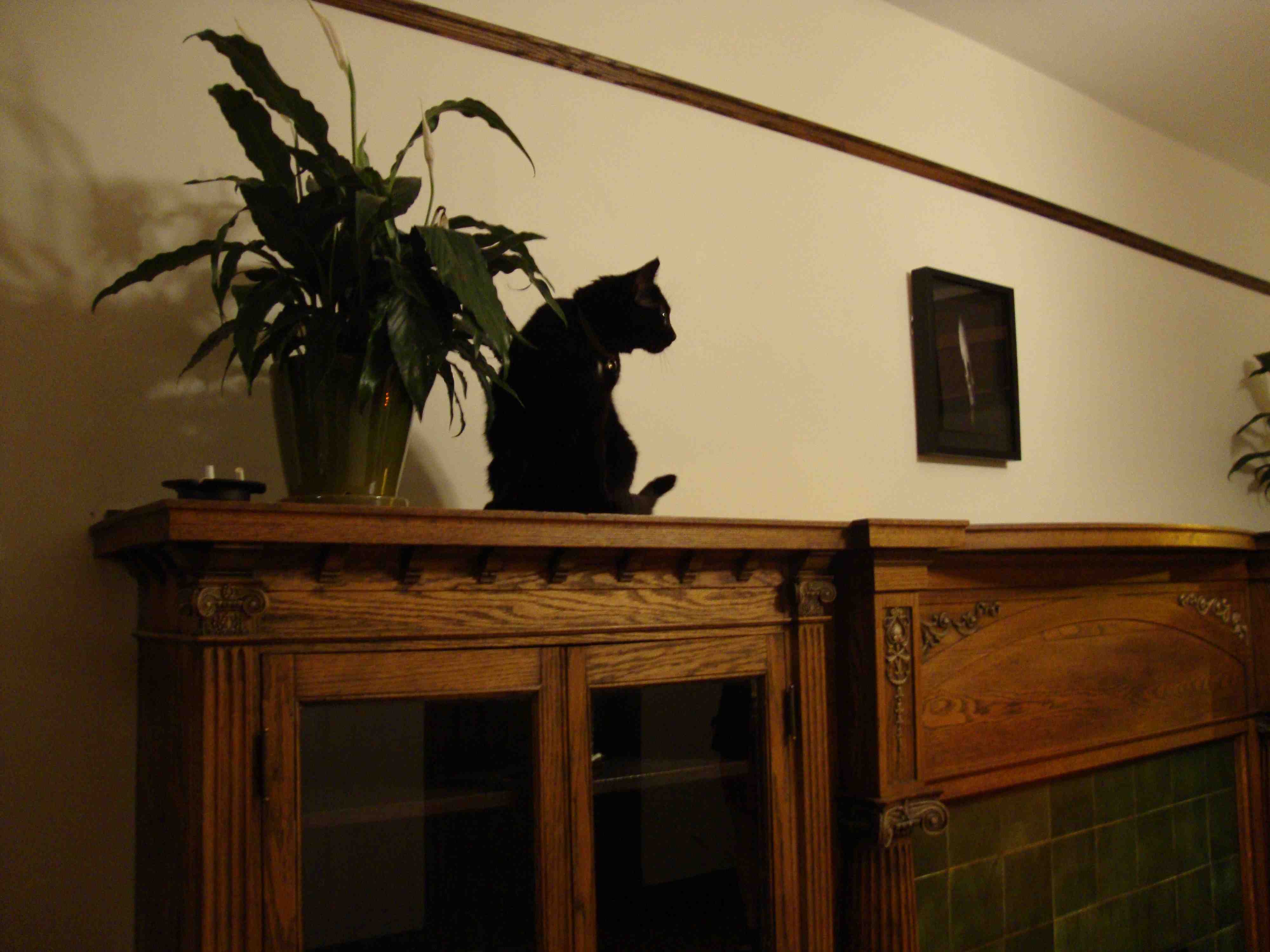
Live Forever
Marty Burns, Dave Dyment, Juan R. Garcia, Elise Goldstein, Megan Hildebrandt, Jason Lazarus, Tibi Tibi Neuspiel, Ruben Nusz
May 15 – 26, 2010
Opening Reception: Saturday, May 15, 7 – 10pm
Gallery Hours: Sundays 12 – 5pm and Wednesdays 6 – 8pm
“I intend to live forever, or die trying.”
- Groucho Marx
CHICAGO: We are pleased to present Live Forever, a group show that closes nine months of exhibition programming. As Concertina Gallery in its current manifestation has come to an end, we bring together eight artists who each take unique approaches to the practice of memorialization.
Dave Dyment’s A Drink to Us (When We’re Both Dead) is a long-term project that addresses the quirks of familial legacy using a one hundred year-old bottle of whiskey. Working with The Glenfiddich Distillery in Scotland, Dyment’s edition includes twenty-five wooden caskets housed in linen boxes, a map of the whiskey barrel warehouse, a small diary documenting the process, and a contract to pass on to the buyer’s descendants, who will collect the whiskey in a hundred years’ time. Megan Hildebrandt’s exhibited works similarly suggest the perpetuation of life after death, as she petitions for the sainthood of the artists in Live Forever. Sainthood Now! is comprised of prayer cards with a hand-drawn portrait of each artist; copies of letters Hildebrandt has sent to His Holiness Pope Benedict the XVI, proof that they have been mailed to the Vatican; and cult-following buttons for each participating artist.
Jason Lazarus and Tibi Tibi Neuspiel both explore the stylistic trope of name-based war memorials. In Neuspiel’s installation, he embroiders names from Maya Lin’s Vietnam War Memorial onto multiple pairs of unremarkable gray sweatpants, hinting at the intimacies of the mass uniform in its relationship to the body. Where Neuspiel re-imagines the form of memorials, Lazarus reinterprets their sources in Orion over Baghdad.Appropriating image titles from the Flickr accounts of US soldiers in Iraq and manually developing them as photograms in the darkroom, Lazarus elevates the personal web commentary of soldiers into lasting physical reminders.
Marty Burns uses Concertina’s dining room window-well to create a kitsch-laden outdoor shrine in remembrance of a recently ended relationship. Composed of fake flowers coated in glitter, and punctuated with flickering lights, These stormy seas came between my love and I… testifies to the inefficacy of resisting the deterioration of both human relationships and manmade memorials. In a similar vein, Ruben Nusz’s cast and carved resin cigarettes and ashtrays preserve disregarded objects. In the place of cigarette butts, however, Nusz fills his ashtrays with anonymous cremated remains, charging the ashtrays with more significance than meets the eye.
The desire to live forever is tantalizing, and creating an enduring presence may take myriad forms. Concertina is sad to close its doors, but we are sure that this is not goodbye.
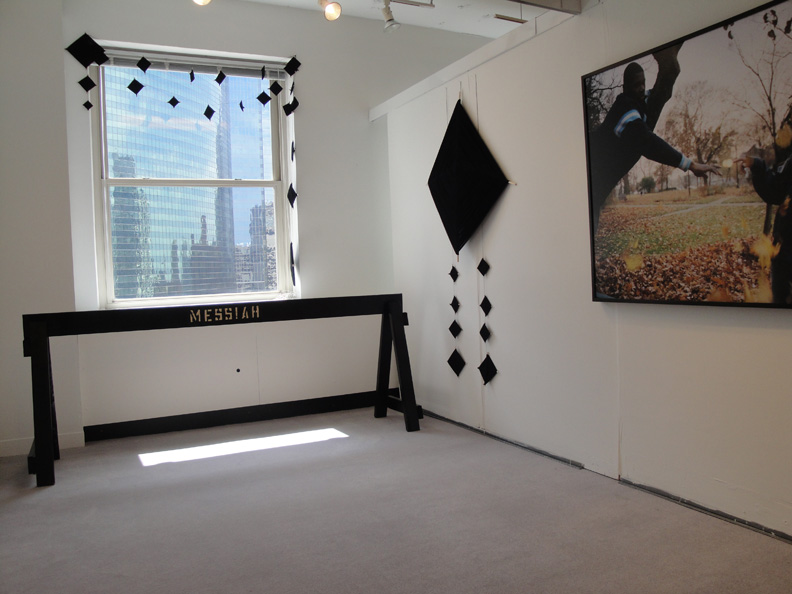
Indulgences: Concertina Gallery at Goffo
Jesse Butcher, Jill Frank, Jaime Lynn Henderson, Tibi Tibi Neuspiel, Corkey Sinks, Casey Jex Smith
Goffo at NEXT Invitational Exhibition of Emerging Art
The Merchandise Mart, 7th Floor, Booth 9052
April 30 – May 3, 2010
Opening Preview: Thursday, April 29
Fair Hours: 11am – 7pm Friday, Saturday; 11am – 6pm Sunday; 11am – 4pm Monday
CHICAGO: Concertina Gallery is thrilled to participate in Goffo at NEXT Invitational Exhibition of Emerging Art. In Concertina’s curated booth, Indulgences, the historical forces of the art market are revealed through an original patron of the arts in the Western world—the Christian Church. The works in Indulgences (the title a reference to the act of paying, whether in confession or currency, for salvation) each examine religious iconography’s long presence in art history and everyday life, oftentimes emerging from the most banal situations.
Jesse Butcher’s installation consists of a handmade roadblock, lacquered black, with the word “Messiah” stenciled on the work’s glossy veneer. This text is a reference to David Koresh, leader of the Branch Davidians, who carried a business card inscribed with the name “Messiah,” suggesting a form of self-marketing appropriated from religious power. In Sistine Chapel, Jill Frank worked with high-school
students to recreate Michelangelo’s renowned commission for the Papal Chapel. In staged, photographed form, the famous pose between God and Adam takes on a sincere but awkward elegance, speaking more about the act of re-performance than the original event.
In his Assassination Sandwich series, Tibi Tibi Neuspiel playfully juxtaposes iconographic historical figures with an unusual display format: an incredibly realistic piece of handmade beeswax toast. For Indulgences, Neuspiel has painted a series of toast pieces where an image of Jesus seemingly emerges from the charred surface, eliciting a long string of unexpected associations from viewers, and perhaps conjuring the feeling of a miraculous apparition in the most unassuming of places. The oversized God’s Eyes created by Corkey Sinks examines how religious imagery infiltrates even the all-American cultural mainstay of summer sleep-away camp.
Jaime Lynn Henderson’s bible scenes explore the difficulty of abiding by Christian principles in the midst of contemporary temptations. Casey Jex Smith, a practicing Mormon, blends religion with autobiography in his playful collages. Jex Smith’s fragmentary images, culled from children’s illustrated Bible workbooks, portray abstract, surreal worlds where religious content becomes transformed into fantasy.
In Indulgences, religious iconography manifests itself as a site to question and reveal the extent that Christian archetypes have informed artist practices and markets throughout time, but also its particular relevance to current art production. As religious imagery converges with the contemporary art market at NEXT, parallels between the sacred space of the white cube—the art fair—and Christian spaces of worship come to light.
Transitions and Translations: MA Visual Critical Studies Exhibition
April 24 - May 2, 2010
Concertina Gallery is pleased to host Transitions and Translations, a group exhibition that brings together visual representations of written thesis work by seven graduate students from the Visual Critical Studies department at The School of the Art Institute of Chicago. While each pursue disparate topics in their individual research, all hunt for solutions in how to visually represent abstract theoretical concepts and arguments as a way of interpreting their meaning. What their visual work brings to the fore is the subtle importance all those little things, the details of our culture, that form the groundwork of a collective visual experience. These seven artist-scholars use their interdisciplinary methods as a means to understand and critique the inevitable shifting transitions and translations of a multivalent contemporary visual culture.
Amanda Brinkman builds a shrine with items and ephemera that document a site of performance, as a way of critically positioning tourism as modern pilgrimage. Maureen A. Burns uses the Concertina stairwell to consider the difficulty of nomadic practices as a form. Joel Kuennen explores the constitution of Western subjectivity and seeing through spatial representation with a video installation. Susan Morelock creates photographs that challenge the contemporary viewing experience in a moment of incredible technological flux. Jorge Mujica, playing with the combination of materials, found objects, and light, experiments with formal ideas of color and space as perceptive functions. Benjamin Pearson aestheticizes the accelerated decay of an aging video archive in order to bring forth a fluid revisualization of history and cultural narrative. Brian Wallace’s self-published chapbook deals with maleness and pop-mysticism, and the work is supplemented in the gallery with wall text.
Curated by Joe Iverson
In conjunction, the theoretical and academic work of the MAVCS 2010 group will be presented at the MAVCS Symposium on Thursday, May 6, 2:00-7:00 PM in Studio A of the Modern Wing at the Art Institute Chicago.
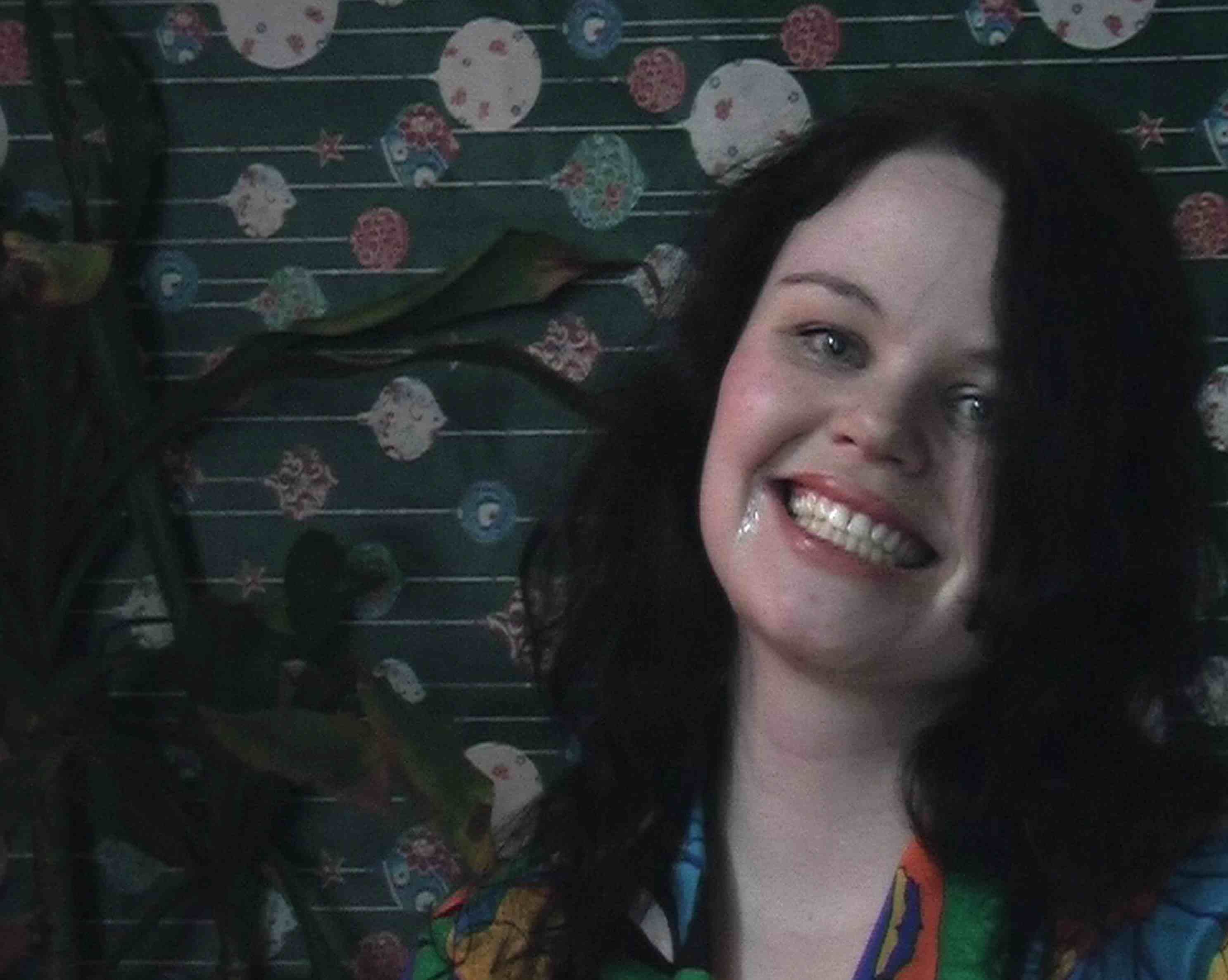
I’m OK You're OK: The Art of Self-Improvement
Jacob C. Hammes & Chelsea Culp
Faith La Rocque & Jaimie Henthorn
Gregg Louis
Habby Osk
Jill Pangallo
April 3 – April 18, 2010
Opening Reception: Saturday, April 3, 7:00 – 10:00pm
Gallery Hours: Sundays, 12:00 – 5:00pm
CHICAGO: Concertina Gallery is pleased to announce the opening of I’m Ok You’re Ok: The Art of
Self-Improvement, a group exhibition of seven artists who explore appropriations of popular self-help and
healing techniques. Neither entirely mocking new age and self-help trends nor blindly subscribing to
their alluring promises, each artist approaches their subject in an exploratory manner.
Gregg Louis’s Home Made Self Help series offers simple solutions to complex problems. Louis was
inspired to create this series after stumbling upon letters by different psychic mediums offering
solutions to debt and unhappiness. By reconstructing age-old wisdoms in digitally fabricated book
jackets, Louis investigates how self-help formulas—the language they use, the promises they make,
and the type of audience they attract—contribute to the economics of healing.
Habby Osk, a film and performance artist originally from Iceland, strenuously, and at times
painfully, portrays the struggles of maintaining a happy face in her endurance video GREAT. Her
non-stop grin at the camera slowly becomes a grimace as her face contorts as she attempts to hold a
smile for 70 minutes, emphasizing the complicated relationship between criticality and sincerity that
exists throughout the exhibition. Jill Pangallo, a persona-based film, installation and performance
artist creates an earnest but fumbling character in the creative healer Natia. Natia states: “I would
like to lead you into the presence of your own healing. Join me in building a river of hope where all
your fears are washed away. Dance with me as you find meaning in a confused world.” Natia has the
best of intentions, but one can’t help but feel underwhelmed by the futility of her actions.
Chicago-based multimedia artist Jacob C. Hammes has been practicing as a hypnotist for a number
of years. His audio installation records a session with a subject suffering from writer’s block, who
describes a fictional meeting between Sigmund Freud, Ana Mendieta, and Jack London while under
hypnosis. Jaimie Henthorn and Faith La Rocque’s collaborative works focus on themes of ritual,
health, belief, and commodity. In the seemingly spare installation Massage Portal, the gallery visitor is
invited to lie on a portable massage bed and, by peering into the face-rest, experience an
otherworldly view.
In this exhibition the art of self-improvement takes a multitude of forms, reminding us of the
struggles and triumphs, nonsense and breakthroughs that constitute psychic and physical growth.
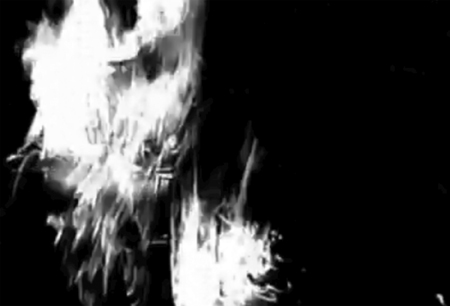
Surrender Dorothy
Jesse Butcher & Corkey Sinks
March 13 – March 28, 2010
CHICAGO: Concertina Gallery is pleased to announce the opening of Surrender Dorothy, the first large-scale collaboration between artists Jesse Butcher and Corkey Sinks. Mining the tropes of adolescent identity, both artists share nostalgia—even obsession—for the stylized rebellion of teenage subcultures. While struggling to find their own place in society, teens often dabble in fringe elements of the mainstream as a form of escapism. Surrender Dorothy will transform three of Concertina’s rooms into disquieting retreats of familiar adolescent experiences.
The title of the exhibition is taken from the 1939 film The Wizard of Oz, referencing the scene in which the Wicked Witch of the West skywrites a threatening message, “Surrender Dorothy”, over the Emerald City. Foundational to many happy childhood memories over the past seventy years, this movie may also serve as a reminder that the rosiest of childhood memories are tinged with fear. References to books, films and music consumed in wood-paneled basements across America run throughout the exhibition–many evolving from myths that teenagers have appropriated for generations as a shelter from the storm of adolescence.
In the liminal space of adolescence, vestiges of childhood meet the teen scene. Throughout the exhibition, these transitional phases converge. A quilt made from band t-shirts contrasts a handmade racecar bed. Oversized “God’s Eyes” hang from the ceiling—unnerving in scale and sheer number—evoking happy episodes from summer camp. Along with video installations and makeshift tie-dye walls, each form in the installation recalls the irreverent contradictions of teenage years, and the residual effects they have in adulthood.
Jesse Butcher (b. 1982 in Germantown, TN) received a BFA from the Rhode Island School of Design in 2005 and is currently in the Master's program at the School of the Art Institute of Chicago. Butcher is a member of Austin-based Okay Mountain and MASS Gallery. He currently lives and works in Chicago.
Corkey Sinks (b. 1983 in Dallas, TX) received an integrated B.A. in Media Studies from the Johnston Center for Integrative Studies at the University of Redlands, CA in 2005. Sinks is a partner of the Austin-based gallery and collective, Okay Mountain, and a founding member of the multimedia collective, Austin Video Bee. She currently lives and works in Chicago.
Artist links:
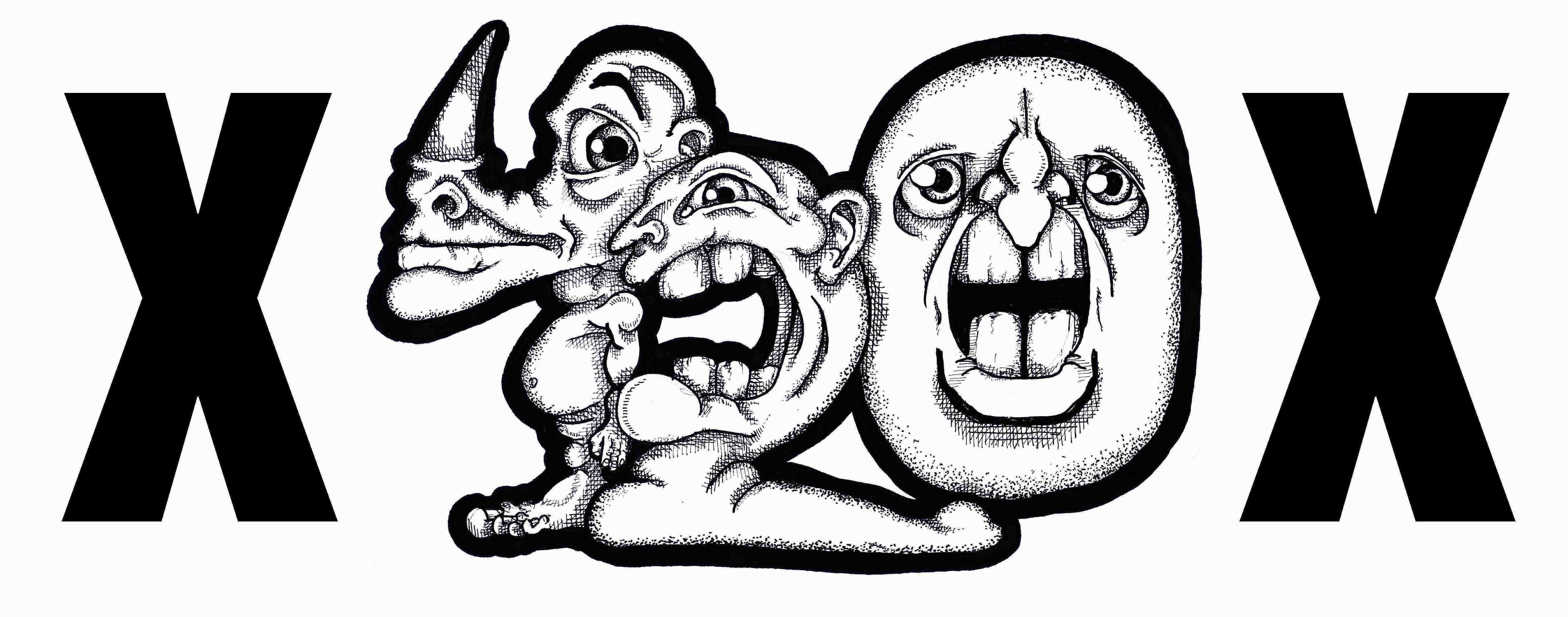
X420X
Saturday, February 13th, 2010 | 6 - 8:30PM (one night only)
CHICAGO: Damian Abraham, perhaps better known as Pink Eyes, frontman of Toronto-based punk band Fucked Up, is an accomplished illustrator whose work constructs a visual language based on highly detailed and grotesque characters. X420X is Abraham’s first solo exhibition, and is comprised of two serial projects and a site-specific wall drawing. A to Z is a set of monstrous characters contorted to form a full set of the alphabet, confronting the viewer upon entrance. Abraham started this current series eight years ago, and has since developed a body of meticulously cut forms that are at once precise and boldly perverse.
Taking cues from artist/musicians pushead and Brian Walsby, Abraham’s work demonstrates the inseparability of music and illustration often found in hardcore punk aesthetics. Abraham additionally looks to the apocalyptic paintings of artist Joe Coleman, whose intricate work interweaves pop iconography with historical references to artists such as Hieronymus Bosch. His biggest influence, however, is his father, who was an illustrator in the 1960s and 70s, working for Oz and Track Records in the UK.
Damian Abraham was born in the east end of Toronto, Ontario and attended the University of Toronto. Fucked Up formed in 2002 and has since released 42 singles and two albums and received the Polaris Music Prize for the year’s best new album in 2009. They are currently represented by Matador Records. Abraham has appeared regularly on the Fox News program Red Eye with Greg Gutfeld since 2009, playing the voice of liberal dissent.
Fucked Up will perform at the Viaduct Theater (3111 N. Western) immediately following the opening of X420X. The concert begins at 9:30PM on February 13.
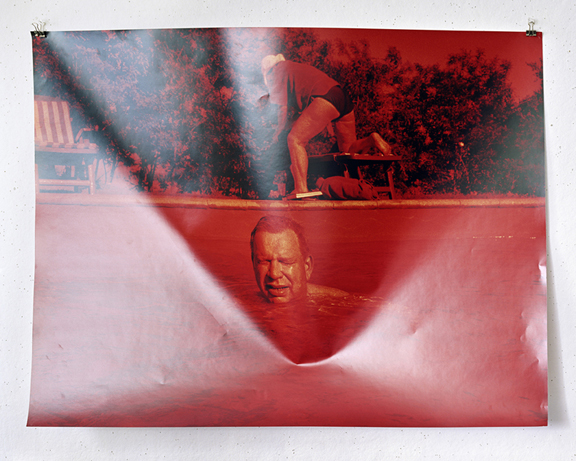
PARTY CRASHERS
Dick Blau
Micah Lexier
Dutes Miller & Stan Shellabarger
Davida Nemeroff
Annie Pootoogook
Carrie Schneider
November 21 – December 13, 2009
Opening Reception: Saturday, November 21, 7:00 – 10:00 pm
Gallery Hours: Sundays, 12:00 – 5:00pm
'There is a popular notion that the photographer is by nature a voyeur, the last one invited to the party. But I'm not crashing; this is my party. This is my family, my history.'
- Nan Goldin
CHICAGO: Concertina Gallery is pleased to announce the opening of Party Crashers, a group exhibition featuring photography, performance, drawing, and mixed media by Dick Blau, Micah Lexier, Dutes Miller & Stan Shellabarger, Davida Nemeroff, Annie Pootoogook and Carrie Schneider.
When representing friends and family, the role of the artist is fraught with complications. Intimacy becomes public, and both artist and viewer are implicated in voyeuristic play. The presence of this exhibition in our domestic space intensifies the roles of outsider and insider, as once the audience crosses the threshold into our home, an acute sense of self-consciousness may arise as concepts of the private and public are confused.
In photographs by Dick Blau, representations of his children and long-term partner reveal the slippery relationship between candid and staged photography. At once a father documenting his family and an artist constructing a composition, Blau calls attention to the awkwardness and inhibitions that exist in the most intimate of relationships. Annie Pootoogook’s colorful drawings in pencil crayon similarly depict everyday family life. The daughter of a long line of Inuit artists, Pootoogook gives viewers a sense of contemporary life in Cape Dorset, Canada, drawing attention to and at times bridging gaps between interior and exterior, insider and outsider.
Carrie Schneider’s Derelict Self series humorously portrays the artist shadowing her older brother in a variety of staged poses. As her body awkwardly mirrors his, issues of sibling respect and rivalry are exposed in the relationship. Mirroring also occurs in the silhouettes of Dutes Miller and Stan Shellabarger. Beards entwined, the artists offer a self-contained representation of intimacy in both their physical resemblance and their roles as both subject and object.
Davida Nemeroff and Micah Lexier both use technical and stylistic manipulations to represent their fathers. In his Fax Test series Micah Lexier letterpresses faxed notes from his father, mimicking his personal script, and drawing attention to modes of familial communication and technological mediation. In What Window Light Can do For My Dad, Nemeroff exhibits not only a family vacation narrative, but she also explores the mechanisms of display. As natural light hitting a photo of her father is re-photographed, his portrait is uniquely framed and doubly mediated.
These works depict family and friends in a variety of mediums and contexts, complicated by the apartment gallery context. Entering a domestic space that is made public can be an unnerving experience, but for this exhibition, “party crashers” are welcome.

AUSTRALIA
Anthea Behm
Aron Gent
October 23 – November 15, 2009
Opening Reception: Friday, October 23, 7:00 – 10:00pm
CHICAGO: Concertina Gallery is pleased to announce the opening of Australia, an exhibition featuring performance and video artist Anthea Behm and photographer Aron Gent.
Acting as a springboard for works by both Behm and Gent, Baz Luhrmann’s 2008 movie Australia provides loaded content for each artist to pick apart and reconstruct. Recently earning a spot in the Museum of Modern Art’s film collection, Australia has established a reputation as both a box office hit and a larger-than-life portrayal of Australian culture and history. Triggering questions of cultural ownership and responsibility, Behm and Gent address the cultural transmission between those represented and those representing. Though the artists work off the same source material, they diverge in form and intention. Behm strips away Luhrmann’s film to its bare structure, rupturing its cinematic devices and inserting the personal, while Gent reworks its surface qualities into an entirely new illusion through time-lapse photography.
In her single-channel video Behm, a Chicago-based Australian, diligently describes the three-hour movie from start to finish, reducing Hollywood spectacle to a deadpan monotone. As viewers watch Behm observe the movie, they are given only verbal descriptors of Luhrmann’s creation. Although free to imagine what is onscreen, viewers also receive information filtered through the artist’s subjective response.
Like Behm, Chicago-based photographer Aron Gent draws attention to the movie’s more illusory aspects. By freezing the action and creating an abstract image, he exaggerates the already stylized qualities of Australia. Gent’s work reveals deceptions of the staged image, often pairing figurative photography with landscapes. In the case of Mountainside (2009), the landscape heightens the formal qualities of the time-lapse photograph from the movie, and in this exhibition acts as a false presentation of Australia. Hollywood blurs boundaries between countries, as various locations become proxies for cultural and national identities. This exhibition allows for an examination of both filmic tropes and cultural interchanges, from the viewpoints of two very different artists.
Anthea Behm received her MFA in Film, Video and New Media from the School of the Art Institute of Chicago in 2009. Her work has been shown in various venues in Australia and beyond, including Gitte Weise Gallery (Sydney); Australian Centre for Photography (Sydney); Back Loft Gallery (Dublin); Chicago Film Forum; and BridgeArt Fair (New York). Behm is a current recipient of the New Work Grant from the Australia Council for the Arts, and is based in Chicago.
Aron Gent received his BFA in Photography from Columbia College in 2007. His work is in the collection of the Milwaukee Art Museum, and he was included in the Magenta Foundation’s Flash Forward publication of emerging photographers in 2007. Gent has been included in a variety of exhibitions, including the Houston Center for Photography; GASP Project Space (Boston); and the Minnesota Center for Photography. He is currently a photography editor for Proximity magazine.
ARTIST LINKS:
Anthea Behm
Aron Gent www.arongent.com

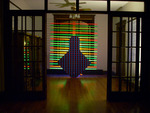

Reader Comments (1)
Different people in the world take the loans from various banks, just because that's comfortable and fast.